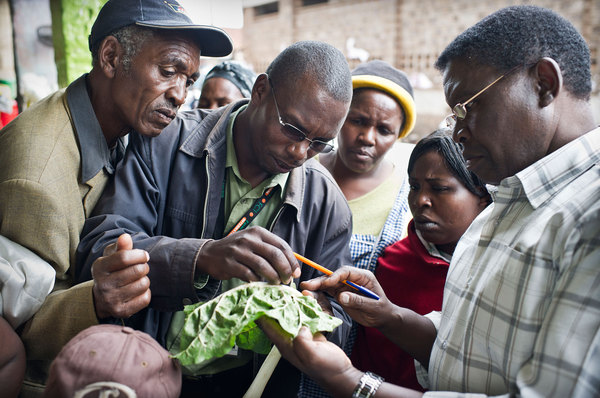Buzzing activity around pollinator health
By Anu Veijalainen, CABI. Reblogged from CABI Hand-picked blog. Yesterday I cherished the start of spring in England by attending an event devoted to pollinators and pollination at the University of Reading. Most presentations at this meeting organised by the Royal Entomological Society were understandably about bees, but we also heard a few talks highlighting the…
Update: Plant Health News (20 Apr 16)
Here’s a taste of some of the latest stories about plant health, including the government in Nigeria introducing soil test kits to farmers, drought hitting bananas in Nicaragua and community managed irrigation schemes in Ethiopia to help ensure food security. Click on the link to read more of the latest plant health news!
Plantwise Annual Report 2015 released
The Plantwise Annual Report for 2015 has been launched. The report is an update on programme implementation between January and December 2015, listing key highlights along with details on progress, lessons learned and next steps for each of the three programme components: Plant Health Systems Development, the Knowledge Bank and Monitoring & Evaluation. Highlights include: 4.5 million farmers reached through plant clinics, plant health rallies,…
Update: New Pest & Disease Records (13 Apr 16)
We’ve selected a few of the latest new geographic, host and species records for plant pests and diseases from CAB Abstracts. Records this fortnight include the first molecular evidence of Citrus yellow vein clearing virus from citrus in Punjab, Pakistan, Pseudopestalotiopsis ignota and P. camelliae spp. nov. associated with grey blight disease of tea in China,…
Kenya’s Phytosanitary Successes and Challenges
Contributed by Roger Day, CABI An “experimental item” added to the agenda of the 2014 Commission for Phytosanitary Measures (CPM) was reports of successes and challenges in implementing the International Plant Protection Convention (IPPC). Each year a couple of countries (or Contracting Parties in the jargon) give a brief presentation, and first up at this year’s…
In drought-hit Burkina Faso, the (plant) doctor is in
Reblogged from Thomson Reuters Foundation Dieudonné Sedogo waits patiently in line to see the doctor in the scorching 49-degree Celsius heat of this village in central Burkina Faso. But the ailment he’s seeking to address today isn’t his own. Instead, it’s the one afflicting the wrinkled aubergine with yellowing leaves he’s carrying in his hand. “Every year…
New initiative to support phytosanitary surveillance
Contributed by Melanie Bateman, CABI As the standard setting organisation for plant health, the International Plant Protection Convention (IPPC) has long had an active, member driven programme to produce International Phytosanitary Measures (ISPMs). Moving forward, the IPPC is putting more and more emphasis on supporting the implementation of the ISPMs and the Convention itself by…
Fighting the fiery little farmers
Contributed by Roger Day, CABI Ants farm bugs like people farm cows. So said Dr Ben Hoffmann of CSIRO, Australia, who led the Tuesday evening seminar at the 11th Session of the Commission for Phytosanitary Measures (CPM) on invasive ants. That’s why they’re a problem in agriculture. They protect and encourage other pests like mealy…
Update: Plant Health News (06 Apr 16)
Here’s a taste of some of the latest stories about plant health, including HLB infected insects identified in Colombia, a new millet variety introduced in Rwanda and a new video to teach farmers in Kenya about drought-tolerant maize. Click on the link to read more of the latest plant health news!
CPM11 kicks off at the FAO in Rome
Contributed by Melanie Bateman, CABI On Monday 04 April 2016, the 11th of session of the Commission on Phytosanitary Measures (CPM) kicked off in Rome. The meeting began with opening remarks from Mr. Daniel Gustafson, FAO Deputy Director General of Operations, and a hearty welcome to the new IPPC Secretary, Mr. Jingyuan Xia.


